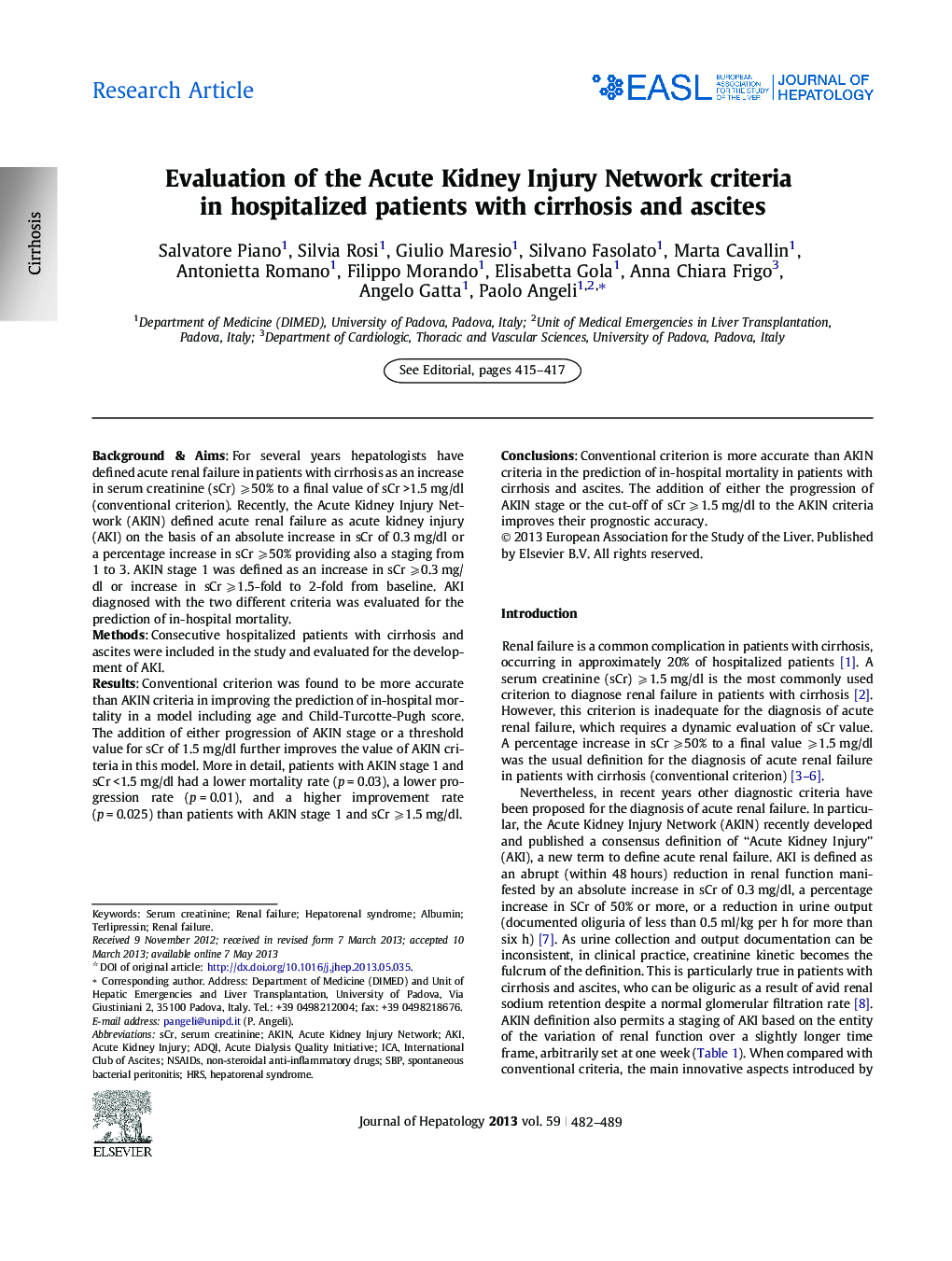| Article ID | Journal | Published Year | Pages | File Type |
|---|---|---|---|---|
| 6104101 | Journal of Hepatology | 2013 | 8 Pages |
Background & AimsFor several years hepatologists have defined acute renal failure in patients with cirrhosis as an increase in serum creatinine (sCr) ⩾50% to a final value of sCr >1.5 mg/dl (conventional criterion). Recently, the Acute Kidney Injury Network (AKIN) defined acute renal failure as acute kidney injury (AKI) on the basis of an absolute increase in sCr of 0.3 mg/dl or a percentage increase in sCr ⩾50% providing also a staging from 1 to 3. AKIN stage 1 was defined as an increase in sCr ⩾0.3 mg/dl or increase in sCr ⩾1.5-fold to 2-fold from baseline. AKI diagnosed with the two different criteria was evaluated for the prediction of in-hospital mortality.MethodsConsecutive hospitalized patients with cirrhosis and ascites were included in the study and evaluated for the development of AKI.ResultsConventional criterion was found to be more accurate than AKIN criteria in improving the prediction of in-hospital mortality in a model including age and Child-Turcotte-Pugh score. The addition of either progression of AKIN stage or a threshold value for sCr of 1.5 mg/dl further improves the value of AKIN criteria in this model. More in detail, patients with AKIN stage 1 and sCr <1.5 mg/dl had a lower mortality rate (p = 0.03), a lower progression rate (p = 0.01), and a higher improvement rate (p = 0.025) than patients with AKIN stage 1 and sCr ⩾1.5 mg/dl.ConclusionsConventional criterion is more accurate than AKIN criteria in the prediction of in-hospital mortality in patients with cirrhosis and ascites. The addition of either the progression of AKIN stage or the cut-off of sCr ⩾1.5 mg/dl to the AKIN criteria improves their prognostic accuracy.
